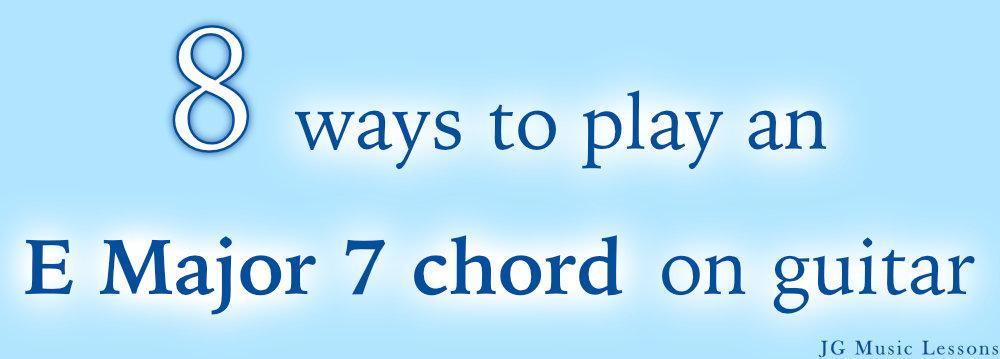This lessons covers how to play the E Major 7 chord which is less a commonly known chord when first learning to play guitar. You may also see this written as E Maj 7 or Emaj7 on sheet music.
The E Major 7 chord has an easy open chord shape but there are many different ways you can play this chord throughout the guitar fretboard. By knowing different E Major 7 chord variations, you’ll be able to use them in different musical contexts.
We’ll first go over some basic chord theory and then cover 8 ways to play an E Major 7 chord which you can start to incorporate into your playing.
Grab your guitar and let’s get started!
E Major 7 chord theory intro
Every Major 7 chord is built upon the chord tones 1, 3, 5, and 7. These chord tones can also be thought of as the scale degrees related to a Major scale.
For example, an E Major 7 chord has the chord tones E, G#, B, and D#. This is essentially an E Major chord with an added 7th chord tone.
Here is the formula for Major 7 chords below.
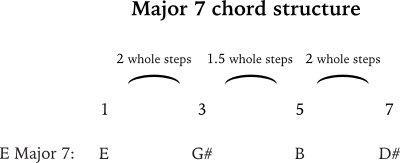
In contrast, minor 7 chords contain the chord tones 1, b3, 5, and b7. For example, an E minor 7 chord would contain the chord tones E, G, B, and D. However, we will only be covering the different Major 7 chord variations in this lesson.
Now that you know what notes belong to the chord structure, let’s look at how to read the chord charts.
How to read the chord charts
For the charts below:
- The top horizontal line of the chord chart represents the high E string and the bottom horizontal line represents the low E string.
- The vertical lines separate each fret.
- The numbers in the blue dots tell you which fingers to use on the fretting hand.
- The letters on the right of the charts tell you what notes you are playing on each string.
- Circles on the left represent open strings.
- Red X means to avoid that string.
You can check this link for more on how to read guitar notation symbols.
Open E Major 7 open chord – simple
Here is a simple way to play an E Major 7 chord with open strings on the first position. This is a common movable shape used for Major 7 chords. This is called a drop 3 chord because the 3rd note from the top gets lowered by an octave.
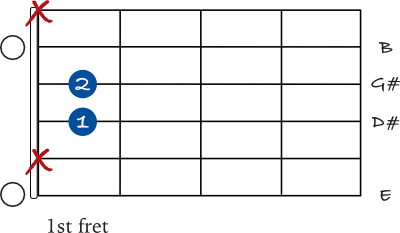
Since we skip the 5th string for this shape, this shape may be more ideal for a fingerpicking style of playing. See the next shape for a fuller chord including all strings.
E Major 7 open chord
This chord now includes every string which you can strum through. This is based on the previous shape and you would simply add your 3rd finger to the 5th string, 2nd fret.
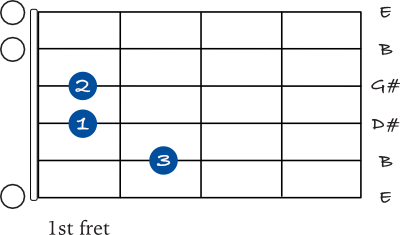
As a side note, I would be cautious with the E note on the 1st string because it can sound dissonant with the D# note on the 4th string (minor 9 interval below). Although the note belongs to the chord, use your ears and judgment to see if you want to add this string to the chord voicing.
E Major 7 chord on the 4th string
Here is a common drop 2 chord shape starting on the 4th string. This is a drop 2 chord because the 2nd note from the top gets lowered by an octave.
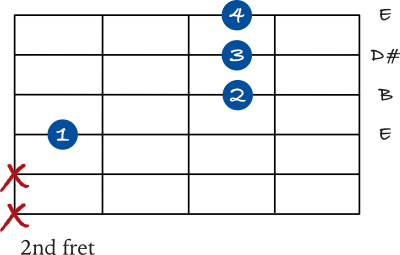
Another way you can play this shape is by barring the notes on the 1st, 2nd, and 3rd string with your 3rd finger. Go with whatever is more comfortable for you.
E Major 7 barre chord 5th string
This next barre chord is a common movable shape that starts on the 5th string. This shape comes from the open A Major 7 chord. If you can’t get the chord to sound clear, first try to get the notes from the 5th to the 2nd fret. Then as you develop more strength in your fingers, you can try adding the 1st string as well.
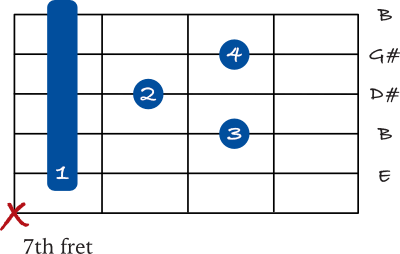
If needed, check out these 5 tips to get better at playing barre chords.
E Major 7 on the 5th string variation
This shape comes from the open C Major 7 chord. If this chord feels like too much of a stretch, first try playing it without your pinky (4th finger). Once you’re able to play the barre down including your 3rd finger, try adding the note on the 4th string. This will get easier as you keep practicing it.
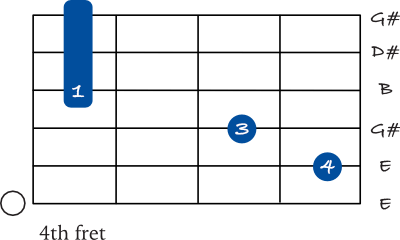
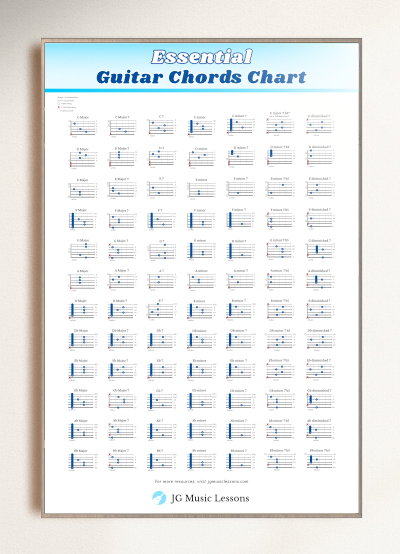
E Major 7 shell chord, 5th string
You can think of this as a shell chord shape (root, 3rd, and 7th chord tones) and adding the extra open strings which belong to the chord structure.
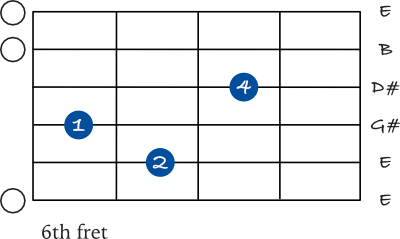
E Major 7 mini barre chord
This shape uses a mini barre chord starting on the 4th string, 9th fret. This is a drop 2 chord because the 2nd note from the top (B) gets lowered by an octave.
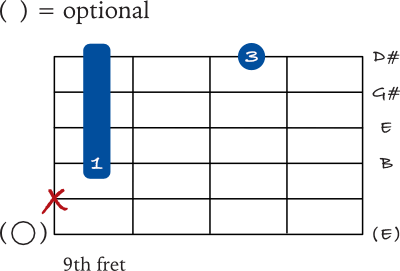
E Major 7 diagonal shape
If your is guitar suitable for playing past the 12th fret, here is one more E Major 7 chord starting on the 4th string, which comes from the open F Major 7 shape. This chord is easier to remember because of the diagonal shape across the top four strings.
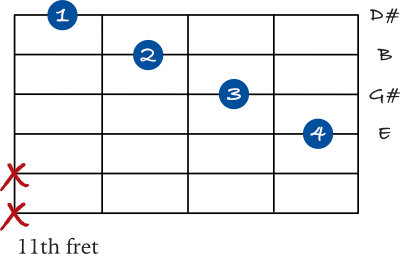
Wrapping up
All these chords were mostly in root position, meaning the root note is in the bass. However, you have even more variations if you use different chord inversions. This is when you play a chord with notes other than the root in the bass.
It’s good to know many possibilities of playing the same chord because you have more flexibility to move around the fretboard. Also, you can use different chord variations when you need a certain note at the top to help define a melody that you are playing over.
I hope this helped you understand how to play an E Major 7 guitar chord or learn new ways of playing it. You can also try shifting the shapes that have all fretted notes to play other Major 7 chords on the same string.
If you’re interested in improvisation, you can learn how to play Major 7 arpeggios on guitar.
Also, see how to play an E 7, or E minor 7 chord on guitar.
📘 Get the free guitar practice guide here!
All the best,
JG Music Lessons
📙 Kickstart your guitar playing with our step by step guide: Guitar Essentials.
🎸 Looking for a travel or half-sized guitar? See this one.
🛠 See our other music recommendations.
🤝 Support the site to help us to create better content for you!
Level up with the FREE guitar practice guide and effectively improve your playing! 🎸
Get it sent to your email!

